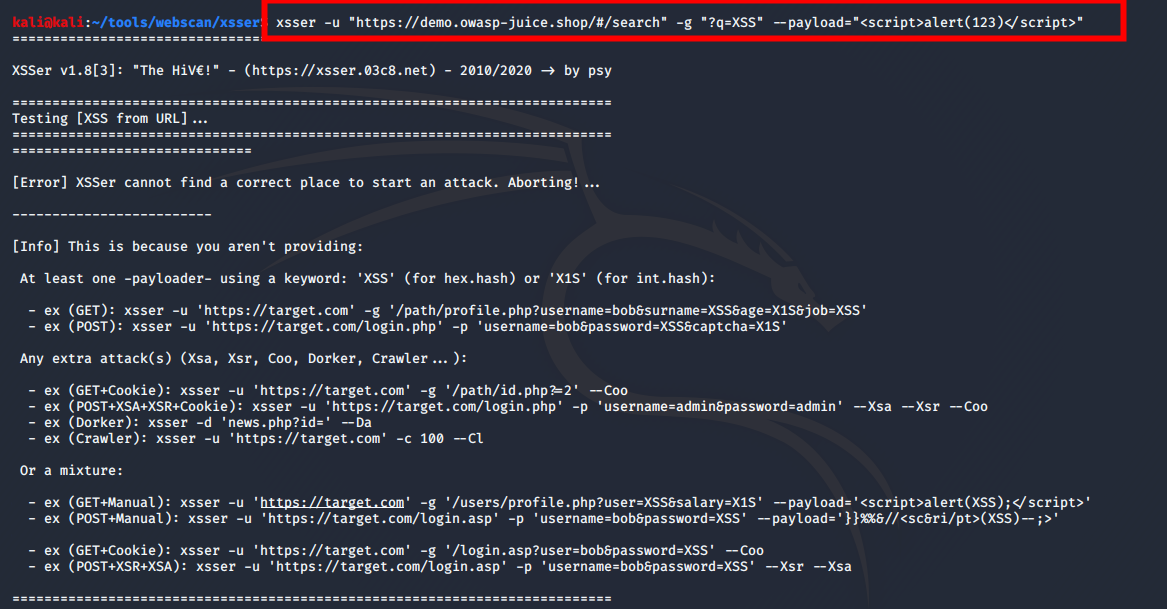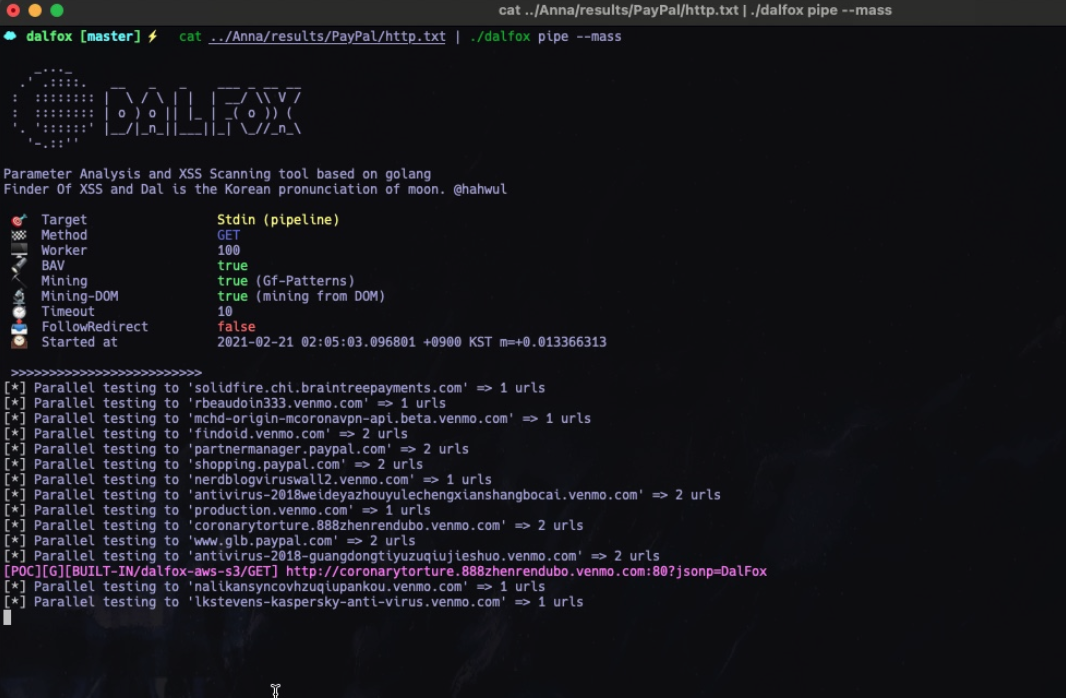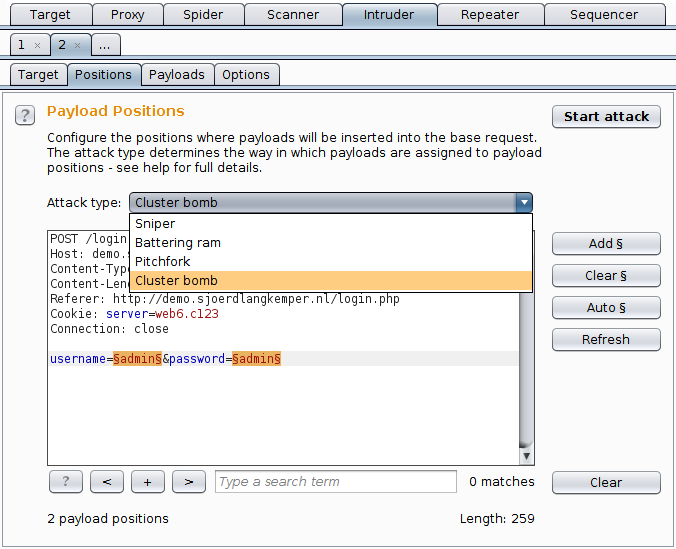To assist security professionals and ethical hackers in their mission to protect web applications, we have compiled a list of the top 10 hidden XSS tools you should be aware of in 2023. These tools are designed to detect and mitigate XSS vulnerabilities, ensuring more secure and reliable web applications.
DOMinator
DOMinator is a powerful tool available on GitHub that focuses on detecting and exploiting vulnerabilities based on the Document Object Model (DOM), including DOM-based Cross-Site Scripting (XSS). It offers a unique approach to analyzing the Document Object Model (DOM) of web applications, which is crucial for understanding how JavaScript interacts with DOM and potentially creates security weaknesses.
You can find the tool here:
Download: https://cyberastral.com/item/dominator/
Github: https://github.com/wisec/DOMinator
XSStrike
XSStrike is an open-source tool available on GitHub that specializes in detecting and exploiting XSS vulnerabilities in web applications. It provides a comprehensive set of XSS scanning methods and useful payloads, making it a valuable resource for security professionals and ethical hackers in their efforts to protect web applications.
One notable feature of XSStrike is its ability to generate intelligent XSS payloads that cover a wide range of attack vectors and encoding methods. By using these payloads, security experts can simulate real attack scenarios and assess the level of risk associated with detected vulnerabilities.
You can find the tool here:
Download: https://cyberastral.com/item/xsstrike-xss/
Github: https://github.com/s0md3v/XSStrike
XSSer
XSSer is an open-source tool available on GitHub that focuses on finding and exploiting XSS (Cross-Site Scripting) vulnerabilities in web applications. It provides a command-line interface for security professionals and ethical hackers to efficiently detect and verify XSS vulnerabilities.
One notable feature of XSSer is its ability to generate reports with detailed descriptions of discovered vulnerabilities, making it easier to understand potential risks and prioritize them. The tool also offers options for fine-tuning the scanning process and adapting to various web application scenarios.
You can find the tool here:
Download: https://cyberastral.com/item/xsser-xss/
Github: https://www.kali.org/tools/xsser/
DalFox
DalFox is an open-source tool available on GitHub that specializes in scanning web applications for XSS (Cross-Site Scripting) vulnerabilities. It provides security professionals and ethical hackers with a fast and efficient way to identify and potentially exploit XSS weaknesses.
One notable feature of DalFox is its ability to perform intelligent detection of reflected and stored XSS vulnerabilities based on the Document Object Model (DOM). By intelligently analyzing application responses and interactions, DalFox can identify potential XSS vulnerability points and provide accurate results.
You can find the tool here:
Download: https://cyberastral.com/item/dalfox-xss/
Github: https://dalfox.hahwul.com/
DSXS
DSXS is a powerful open-source tool available on GitHub that focuses on discovering XSS (Cross-Site Scripting) vulnerabilities in web applications. Developed by a specialized security enthusiast community, DSXS aims to streamline the process of identifying and mitigating XSS vulnerabilities, ensuring the resilience of web applications against potential attacks.
You can find the tool here:
Download: https://cyberastral.com/item/dsxs-xss/
Github: https://github.com/stamparm/DSXS
BruteXSS
BruteXSS is a powerful open-source XSS (Cross-Site Scripting) brute-force tool available on GitHub. Originally developed by Shawar Khan as a command-line interface (CLI) tool, it has been redesigned and expanded with a graphical user interface (GUI) for added convenience.
Created using Python, BruteXSS is a cross-platform tool that can be run on various operating systems as long as Python is installed on the computer. This flexibility makes it accessible to a wider range of security professionals and ethical hackers.
You can find the tool here:
Download: https://cyberastral.com/item/brutexss-xss/
Github: https://github.com/rajeshmajumdar/BruteXSS
XSScrapy
XSScrapy is an open-source tool available on GitHub that focuses on automating the process of finding XSS (Cross-Site Scripting) vulnerabilities in web applications. Developed by security enthusiasts, XSScrapy provides security professionals and ethical hackers with a powerful platform for systematic scanning and detection of potential XSS weaknesses.
One of the key features of XSScrapy is its ability to generate detailed reports that contain an overview of discovered vulnerabilities and related information. These reports assist in prioritizing and mitigating XSS risks, allowing security professionals to effectively address vulnerabilities.
You can find the tool here:
Download: https://cyberastral.com/item/xsscrapy-xss/
Github: https://github.com/DanMcInerney/xsscrapy
Wapiti
Wapiti is a widely used open-source web application vulnerability scanner available on GitHub. Developed in Python, Wapiti is designed to identify security vulnerabilities in web applications through a comprehensive and systematic scanning process.
Thanks to its versatile scanning capabilities, Wapiti can analyze various aspects of web applications, including input fields, URL parameters, and forms. It employs a wide range of methods, such as fuzzing, to detect potential vulnerabilities like XSS (Cross-Site Scripting), SQL injection, and file inclusion.
You can find the tool here:
Download: https://cyberastral.com/item/wapiti-xss/
Github: https://wapiti-scanner.github.io/
XSSFuzzer
XSSFuzzer is a powerful tool used for testing and identifying XSS (Cross-Site Scripting) vulnerabilities in web applications. By generating various malicious payloads and injecting them into different input fields and parameters, XSS Fuzzer aims to discover potential weak points that could be exploited by malicious actors.
One of the key features of XSS Fuzzer is its ability to generate customizable payloads. Users can define and modify payloads to suit their specific requirements, enabling individual testing of different XSS attack vectors. Additionally, the tool provides options to configure parameters such as scanning depth, target URLs, and injection points, allowing for comprehensive testing in various parts of a web application.
You can find the tool here:
Download: https://cyberastral.com/item/xssfuzzer-xss/
Github: https://github.com/NytroRST/XSSFuzzer
Burp Intruder
Burp Intruder is a widely recognized and powerful tool in the field of web application security testing. It is a module within Burp Suite, a comprehensive set of tools designed for assessing the security of web applications.
Burp Intruder provides extensive functionality for automating and customizing various types of attacks, including brute-forcing, fuzzing, and injection testing. Its versatility makes it a valuable resource for security professionals, ethical hackers, and penetration testers.
With Burp Intruder, users can conduct targeted attacks by specifying desired injection points and defining custom payloads. It supports multiple types of attacks, such as time-based attacks, error-based attacks, and cluster attacks, to detect various classes of vulnerabilities.
You can find the tool here:
Download: https://portswigger.net/burp
Conclusion
In conclusion, XSS remains a common and potentially dangerous vulnerability in web applications, making it crucial for security professionals and developers to stay up-to-date with the latest tools and techniques for effective XSS testing and mitigation. In this article, we have covered the top 10 hidden XSS tools that you should be aware of in 2023.
These tools offer a range of features and capabilities, allowing security researchers, penetration testers, and developers to identify and address XSS vulnerabilities. From powerful scanners like XSStrike and Wapiti to automation tools like XSScrapy and BruteXSS, each tool provides its unique approach to XSS testing.
The availability of these tools on GitHub, an open-source platform, encourages collaboration and continuous improvement. Developers and security enthusiasts contribute to their development, ensuring that they remain effective against emerging XSS threats.
However, it’s important to remember that responsible and ethical use of these tools is paramount. Prior authorization and consent from application owners are necessary before conducting any security testing.
By utilizing the top 10 hidden XSS tools described in this article, security professionals can expand their XSS testing capabilities, strengthen web applications, and protect user-sensitive information from potential attacks. Stay informed, keep learning, and remain vigilant in the ever-evolving world of web application security.














